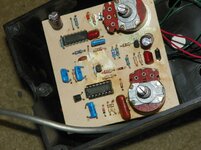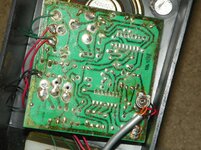SoCalDesertFox
Full Member
- Nov 27, 2015
- 120
- 88
- Detector(s) used
- First Texas Search Master DX-3500 (1981)
- Primary Interest:
- Other
So I'm picking up a Search Master DX 3500 metal detector tomorrow for $10. Assuming it is in working condition, are there any useful/recommended modifications that have been done, or perhaps custom coils? Any idea on the frequency this detector utilizes? (I can probably look at the in-line capacitors and know the intended frequency after seeing the values of what are typically two capacitors used to make a tuned circuit but I'd rather not open it up until necessary.)



![IMG_1015[1].JPG IMG_1015[1].JPG](https://www.treasurenet.com/data/attachments/1142/1142617-c66972b6244aa69e322913a81ea2fe44.jpg)






